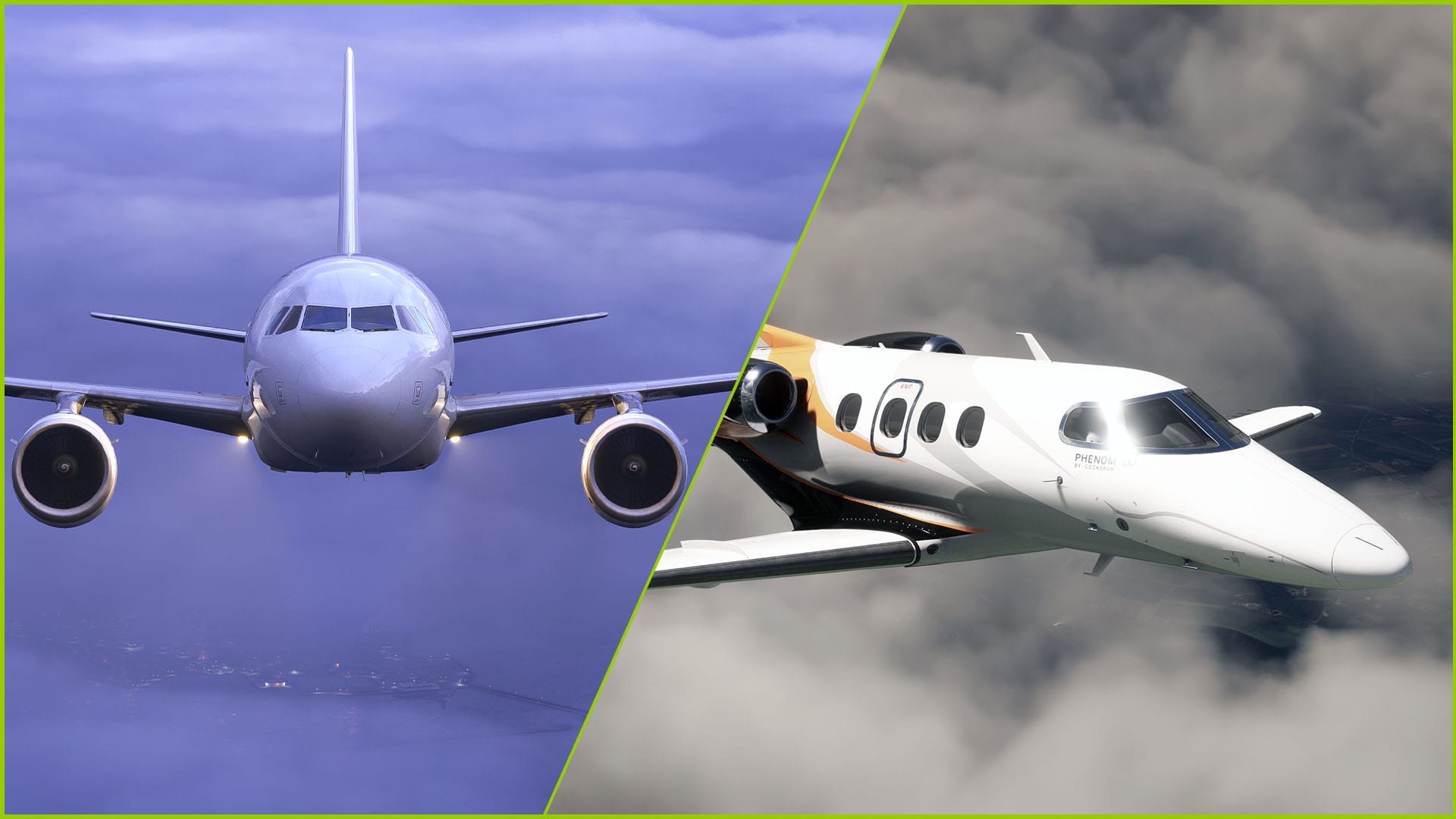
Third-party developers released new assets and details about upcoming add-ons and updates for Microsoft Flight Simulator, including aircraft and scenery.
We start with BlueBird simulation, which showcased the first work-in-progress image of its upcoming Boeing 767 that will come after the 757.
Looks like the picture actually shows the state of the project six months ago, and a lot of progress has been made since, but for now, this is all we get.
We get some new screenshots of the Block 2 version of Fenix’s popular Airbus A320, showing the IAE engines and the progress made on the aircraft’s model.
We hear that the “wrapping up” phase before the release of the update is “measured in weeks, not months.”
We also get a rather detailed description of what we see in the screenshots below on the developer’s Discord server.
Starting in the cockpit, daytime – I may have fibbed a little when I said don’t expect much too change in the cockpit in Block 2. From this angle, you can see the new, thinner, centre window pillar, side windows, and of course a couple of new cockpit configuration options, such as the blanked off DCDUs.
The entire cockpit has been remapped to more efficiently utilise texture memory; as it stands, the entire texture set is floating just below the 1GB mark, which is less than half the memory of Block 1.
Popping outside before the sun goes down, we see something new slung under the wings. Looking further, you’ll see the new wing, wingtip fence, nose, and landing gear – if you think you can see the tyres compressing under the weight of the aircraft, you’re not imagining it: we spent quite some time building a soft-body physics system for the tyres.
They will deform under load, including sidewall deformation on the nose wheel tyres if you make a tight turn at a speed that make even Max Verstappen would wince. We’ll have some videos of this coming I’m sure.
A couple of close ups showing the engine in detail; everything from subtle panel deformation due to the heat cycling of the engine, to the dirt being pushed out of the panel seams by the air-stream in flight. You’ll see this a lot around the new exterior in Block 2: physically accurate, physics-driven weathering.
The dirt accumulates in the panel seams usually due to rain and water droplets capturing dust and dirt on the aircraft, and drawing it down with gravity until it reaches a seam. This dirt-filled-water is then pushed out of the seams by the high speed airflow in flight, leaving a streak in it’s wake.
Depending on where the dirt has accumulated, it may contain dust particles or even oil, which will leave a different surface deposit, with oil being a little more reflective and viscous, affecting how it streaks across the surface of the aircraft.
Having spent 45 minutes explaining how dirt works, the sun has gone down, which brings us onto the the night environment. Under airport lighting, we start to see a lot more surface imperfections. Mmmm. Tasty. You can also see into the new cabin. Are those new seats?
Boarding the aircraft again, we can see the winglight not just illuminating the mighty/mini V2500, but also correctly casting shadows on the intake and the ground. This is part of the new shadow-casting lights in Block 2, a first in MSFS.
Diving into the cockpit we start to see some of the new night environment improves. A better dome light, new LCD simulation that makes flying at night a LOT nicer, and some subtle improvements across the materials.
Despite being called a dome on a daily basis (Thanks Aamir), I prefer flying with it off, leaving just the integrals to illuminate the way. In Block 1, this isn’t really possible as the integrals don’t bleed any light into the rest of the flightdeck, leaving you to ‘guess’ your way around. With Block 2, the integral lighting reflect off of and bounce around various cockpit surfaces, switches, and panels, to give you just enough light to fly with.
And finally, a proper close up of the night experience in Block 2. The combination of shadow-casting lights, new integral lighting system, and LCD simulation makes it feel like a whole new aircraft at night. Seriously cozy.
Next, we take a look at a charming trailer of Cockspur’s Embraer Phenom 100 business jet, which we also learn will be released in Q1 2004.
More screenshots come from Drzewiecki Design, showing progress made on its Warsaw Landmarks add-on, which still doesn’t have a release date.
Lastly, Cowan Simulation released a brand new helicopter, the Robinson R66. It can be purchased on the developer’s own store for $29.99.
It provides the following features.
- Free Future Updates
- Custom Bindable Throttle
- All Default Bindings Work
- Bindings Explained in Manual
- Detailed Manual
- Detailed Paint Kit
- Persistence Saves Weight & Balance
- Persistence Saves Options for Next Flight
- Tested and Zeroed in by Real Pilots
- Realistic StartUp Procedure
- Realistic Systems
- Working Breakers
- Animated Passengers
- In 3D Cockpit Checklist
- Side Storage Basket
- Baggage and Crates
- 3 Panel Variants (G530/GTN/GX3/Analog)
- PMS GTN 650/750 Integration
- TDS GTNXi 650/750 Integration
- Solo Controls Optional
- Emergency Floats
- Optional Upper Window
- Individually Removable Doors
- Optional Windshield Visor
- Working A/C
- Exhaust Blur FX
- Downwash FX
- Vibration Animations
- 51 Paint Jobs (liveries)
- Dynamic Weight Options
- Wwsie Fully Dynamic Sound Pack
- Fully VR Ready
- Realistic Flight Dynamics
- Custom 3D Instruments
- Detailed Night Lighting
- Accurate 3D Modeling
- 4/8K PBR Textures
As usual, please keep in mind that here on TechRaptor, we publish daily Microsoft Flight Simulation news to keep you informed on what’s happening in this extremely dynamic market.